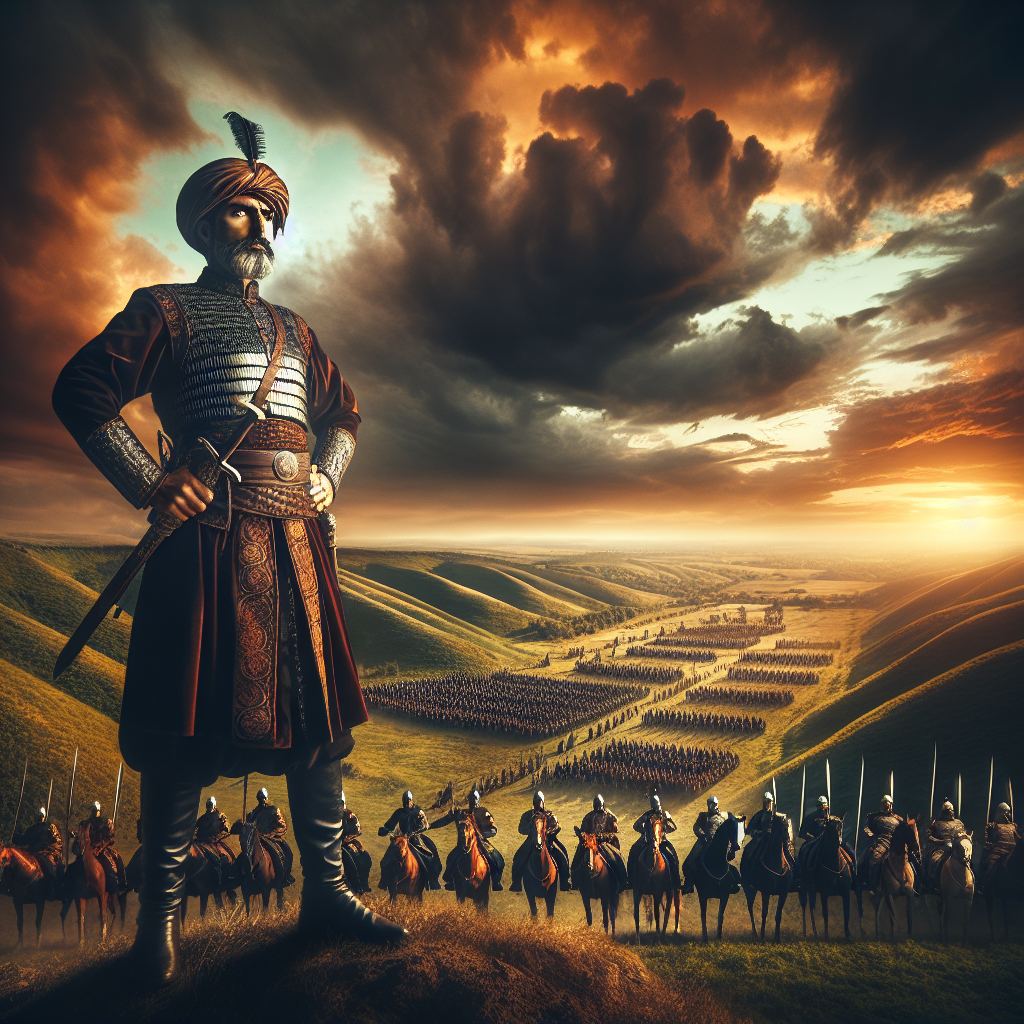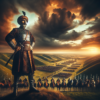In the annals of history, some figures stand out not just for their military prowess or political achievements but also for their remarkable contributions to the cultural tapestry. Salah ad-Din, known widely in the West as Saladin, is celebrated for his role as a military leader during the Crusades. However, his influence extends far beyond the battlefield. His dedication to the arts and sciences left an indelible mark on the cultural development of his time. In this blog post, we’ll explore how Salah ad-Din’s patronage enriched arts and sciences, providing insights into his lasting legacy.
The Historical Context of Salah ad-Din’s Era
To truly appreciate Salah ad-Din’s contributions, one must first understand the historical backdrop of his time. The 12th century was a period marked by both conflict and collaboration between different cultures. The Crusades brought Western Europe into closer contact with the Islamic world, creating a unique exchange of ideas and traditions. Amidst this complex tableau, Salah ad-Din emerged as a leader not only concerned with territorial control but also with fostering cultural and intellectual growth.
During his reign, the Islamic world was a hub of scholarly activity, with cities like Baghdad, Cairo, and Damascus serving as centers of learning. This era, often referred to as the Islamic Golden Age, saw significant advancements in various fields, including mathematics, medicine, astronomy, and philosophy. It was within this vibrant intellectual climate that Salah ad-Din’s patronage would flourish, supporting the arts and sciences and leaving a cultural legacy that endures to this day.
Salah ad-Din’s Vision for Cultural Flourishing
Salah ad-Din’s vision extended beyond the immediate concerns of war and governance. He understood the importance of cultural and intellectual development in establishing a strong and enduring society. His patronage of the arts and sciences was not merely a reflection of personal interest but a strategic effort to elevate his realm’s standing in the broader world.
By fostering a culture of learning and creativity, Salah ad-Din aimed to create a thriving environment where innovation could flourish. His commitment to this vision manifested in various ways, from supporting scholars and artists to commissioning architectural wonders. Through these endeavors, he sought to cultivate a society that valued knowledge and artistic expression, understanding the power of culture to inspire and unite people across different backgrounds.
The Role of Scholars in Salah ad-Din’s Court
At the heart of Salah ad-Din’s cultural initiatives was his support for scholars. His court became a magnet for learned individuals from across the Islamic world, attracting luminaries who contributed to a vibrant intellectual atmosphere. Salah ad-Din recognized the value of diverse perspectives and encouraged an exchange of ideas that transcended geographical boundaries.
Under Salah ad-Din’s patronage, scholars were provided with the resources and freedom to pursue their research and share their findings. This support facilitated advancements in various fields, from mathematics and astronomy to medicine and philosophy. The scholarly community within his court played a pivotal role in preserving and expanding upon the knowledge of past civilizations, ensuring that these intellectual treasures were passed down to future generations.
Architectural Marvels of Salah ad-Din’s Time
Salah ad-Din’s patronage of the arts is perhaps most visibly manifest in the architectural wonders constructed during his reign. These structures, ranging from grand mosques to elaborate palaces, stand as a testament to his commitment to artistic excellence. By commissioning these architectural marvels, Salah ad-Din not only beautified his cities but also created lasting symbols of his reign.
The architecture of Salah ad-Din’s time reflected the aesthetic sensibilities of the era, characterized by intricate geometric patterns, elegant arches, and beautifully adorned facades. These structures served as places of worship, centers of learning, and hubs of social interaction, embodying the harmonious blend of art and function. Through these architectural achievements, Salah ad-Din left a legacy that continues to inspire awe and admiration.
Preserving Knowledge through Libraries
Libraries played a crucial role in Salah ad-Din’s cultural agenda, serving as repositories of knowledge and centers of intellectual activity. Recognizing the importance of preserving and disseminating information, Salah ad-Din supported the establishment of libraries that housed vast collections of manuscripts and texts.
These libraries were not only places of study but also hubs of scholarly collaboration. Scholars and students gathered within their walls to engage in discussions, conduct research, and contribute to the advancement of knowledge. The libraries of Salah ad-Din’s time played a vital role in safeguarding the intellectual heritage of previous generations while facilitating the exploration of new ideas, ensuring the continuity of learning across centuries.
Contributions to the Sciences
Salah ad-Din’s patronage extended to the sciences, fostering an environment where scientific inquiry could thrive. His support for scholars and researchers paved the way for advancements in various scientific disciplines, from astronomy and mathematics to medicine and chemistry.
Under Salah ad-Din’s patronage, scientists made significant strides in understanding the natural world, conducting experiments, and developing theories that would shape future generations of thinkers. These contributions were characterized by a spirit of curiosity and exploration, driven by a desire to unlock the mysteries of the universe. Through his support of scientific endeavors, Salah ad-Din demonstrated a commitment to intellectual progress and the betterment of society.
The Influence of Salah ad-Din’s Patronage on Art
Artistic expression flourished under Salah ad-Din’s patronage, reflecting the rich cultural diversity of his realm. From the intricate calligraphy adorning manuscripts to the vibrant textiles produced in workshops, the arts served as a means of both personal expression and cultural exchange.
Salah ad-Din’s support for artists encouraged innovation and experimentation, resulting in unique creations that blended traditional techniques with new ideas. The art of his time captured the essence of a dynamic society, capturing the beauty and complexity of the world through various forms. By nurturing the arts, Salah ad-Din not only enriched his own realm but also contributed to the broader cultural legacy of the Islamic world.
Legacy of Cultural Exchange
Salah ad-Din’s patronage of the arts and sciences fostered a climate of cultural exchange, where ideas and traditions from different regions converged. His court became a melting pot of influences, where scholars, artists, and thinkers from diverse backgrounds collaborated to push the boundaries of knowledge and creativity.
This spirit of cultural exchange extended beyond the confines of his realm, influencing neighboring regions and contributing to the broader cross-cultural dialogues of the time. Salah ad-Din’s legacy of cultural exchange serves as a reminder of the power of collaboration and understanding in advancing human progress, transcending the divisions of time and place.
The Enduring Impact of Salah ad-Din’s Patronage
The impact of Salah ad-Din’s patronage continues to resonate in the present day, shaping our understanding of cultural development and intellectual achievement. His dedication to the arts and sciences created a legacy that has inspired generations of scholars, artists, and thinkers.
Through his support for knowledge and creativity, Salah ad-Din laid the groundwork for future advancements and set a precedent for the role of leaders in fostering cultural growth. His contributions serve as a testament to the enduring power of the arts and sciences to elevate societies and enrich the human experience.
Lessons for Modern Leaders
The example set by Salah ad-Din provides valuable lessons for modern leaders seeking to harness the potential of the arts and sciences for societal advancement. His commitment to nurturing creativity and supporting intellectual pursuits offers a model for fostering innovation and progress in our contemporary world.
In a rapidly changing global landscape, the lessons of Salah ad-Din’s patronage remind us of the importance of investing in cultural and intellectual capital. By prioritizing the development of knowledge and creativity, modern leaders can create environments where ideas flourish and contribute to the betterment of society.
Conclusion and Call to Action
Salah ad-Din’s patronage of the arts and sciences remains a shining example of the profound impact that visionary leadership can have on cultural development. His support for scholars and artists, along with his commitment to preserving and disseminating knowledge, left an indelible mark on history.
As we reflect on Salah ad-Din’s legacy, we are reminded of the enduring significance of the arts and sciences in shaping the world around us. By recognizing and nurturing the potential of these disciplines, we can continue to inspire future generations and create a more vibrant and enlightened society. For those interested in exploring further, numerous resources and publications offer additional insights into Salah ad-Din’s life and contributions, inviting us to engage with the rich tapestry of history and culture.










